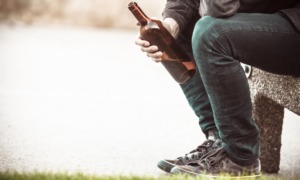 Anyone skimming the media recently is likely to come across a rash of coverage focused on middle-class families from Caucasian communities in the throes of a heroin crisis. A large portion of this coverage bumps up against a sense of denial that even well-to-do children are impacted by addiction.
Anyone skimming the media recently is likely to come across a rash of coverage focused on middle-class families from Caucasian communities in the throes of a heroin crisis. A large portion of this coverage bumps up against a sense of denial that even well-to-do children are impacted by addiction.
Caucasian parents are seeking softer drug penalties for their children as they confront the public in a state of shock. Many of these recent articles hash out thorny conversations from within what has been described as “empowered,” white, upper-class demographics.
Phrases such as, “When I was a kid, junkies were the worst,” and “I used to have an office in New York City. I saw them …” pinpoint the barbed language used to reinforce distinct divisions.
Yet, as one father being interviewed starts to surmise, it is evident that the addict out there has somehow become the addict who is his loved one. Still, he is uncertain as to why.
There is a failure to recognize that despite best-laid plans, resources and intentions, drug addiction can affect those closest to us. Addiction doesn’t come from the outside. It is not something specifically reserved for the wretched. It is an insidious disease that comes out from the inside and is met by an array of forces that shape its path.
This is not to attack victims of addiction or to discredit the grief or experiences of families and the lives of their children. Instead, examining addiction in a range of socio-economic contexts is a way to learn about how we navigate the issue of addiction for all youth.
Speaking from experience, there is nothing more beguiling, and also enraging, than the anonymous witnessing of everyday talk where the word addict or alcoholic gets tossed around. It is often followed by a slanderous list of descriptions like worthless, disgusting, incarcerated and dead, followed by “at least I’m not …”
One reason it becomes important to recognize how these labels are used is to notice that they marginalize and degrade the addict. Additionally, in contexts such as white communities, many of these labels infer that addicts are people of color, and/or of lower status and means.
In previous political eras, it seemed that the war on drugs was in fact a war on people of color. But today, whites are being faced with an unexpected crisis that has turned a war on deviance into a desperate cry for help.
Suddenly, there is an urgent appeal for a change in the legal consequences that advantaged whites had no problem demanding when they believed the affliction belonged to someone other than themselves.
[Related: Alcohol and College Students: A Study in Prevention]
Yet for the anonymous other, the person many believe they could never be, the social laws and public sentencing of the addict is carried out in merciless ways daily. You would never know there are millions of us worldwide, from every race, religion and creed, living among you in anonymous recovery.
Many of these points can be difficult to absorb given the underlying level of crisis, at a time when lives are being lost at an alarming rate. For many, a campaign on consequences seems a viable solution to the issue of addiction.
With the appearance of an unforeseen epidemic on their hands, parents are hurriedly asking for a “gentler drug war.” Not only has drug use moved off the streets and into suburban living rooms, but the drug war has shifted its terrain too.
The media notably illustrate how Caucasian parents have fought most of this battle from the front lines of their homes in the form of letter writing, news interviews and phone calls to state officials. The nature of such a response denotes a position of power that can summon political agency from behind closed doors.
Such examples point to a deeply skewed political climate for addicts operating under the influence of wealth and skin color, as well as strategic words. As armchair activists, these families seem to have enough prestige and familiarity with legislation as to demand redevelopment of drug law and policy on their terms.
The shift puts a glaring light on the way Americans fight for white lives. One select group is differentiated from the rest of youth suffering from the same crisis, in the same way that one group of parents, out of millions nationwide, are given preferential grief and penalties that allow their children to get medical care over incarceration.
From my perspective, a more viable campaign is acknowledging that many “empowered” middle-class families are actually in denial. Many families have faced alcoholics and alcohol dependency in one form or another. The social behaviors that normalize shades of addiction make it all the easier to sneak in the back door.
As a result, the disease appears in more progressive forms over time. We have relied on the assumption that alcohol is not a drug for far too long, making it a lesser sibling of the devilish substances we call drugs. But its consequences act in the same manner within the same disease.
More profoundly, there is a little part of each of us that has built our identity around the idea that no matter what we are doing with shopping, food, relationships, money, exercise, spirituality, beer, pills or anything that provides sensation outside of ourselves, we are most certainly not, and never will be, an addict. We can’t be. At least we aren’t — you know — that.
Such fears shape the biased and racialized views of the addict. We tell ourselves, “They are not our children, our parents, our co-workers, and especially not ourselves.” We say, “Such disarray happens to the poor, deranged, homeless or criminal.”
Yet addiction is a pervasive disease with many faces, in nearly every culture. The disease disguises itself into socially acceptable forms and suppressed conditions. We cannot hide behind the criminalization of certain races to be the “most likely addicts” or the stereotypical addict that represents certain clichés. It is everywhere, affecting everyone.
Therefore, it is no surprise to find white youth facing an alarming heroin epidemic in staggering numbers. I do not think this is an issue of whites suddenly taking up heroin. They always have.
I think this is an issue of young people being exposed to more severe substances earlier in life. I would warn that it is also due to the way in which capitalism mirrors the disease.
We can also look at how society has changed in its laxness toward legalization of drugs or acceptability and glamorization of drug culture. (Note the contemporary popularization of heroin in Gen Y examples such as the singer Lorde, and the movie “The Bling Ring.”)
To me, the onus falls on consecutive generations becoming more indulgent than anything else. I believe that a literal denial of what or who an addict is, lack of education around the disease of addiction and the talk that enforces the addict as other are some of many reasons why white youth are succumbing to the disease in larger numbers by way of harder drugs.
It goes to show that stable, middle-class families aren’t protected from the disease. Even with such perks as secure neighborhoods and schools with plenty of resources, addiction becomes prevalent.
Jennifer Dauphinais is a doctoral candidate at Columbia University Teachers College. She can be reached at jcd2198@tc.columbia.edu.
More related articles:
BAMBI Program Supports Moms and Babies in Prison
Video of Family Members Lost to Addiction Strikes Deep in Hearts of Young Adults
Mothers and Fathers on Losing Children to Drugs






























